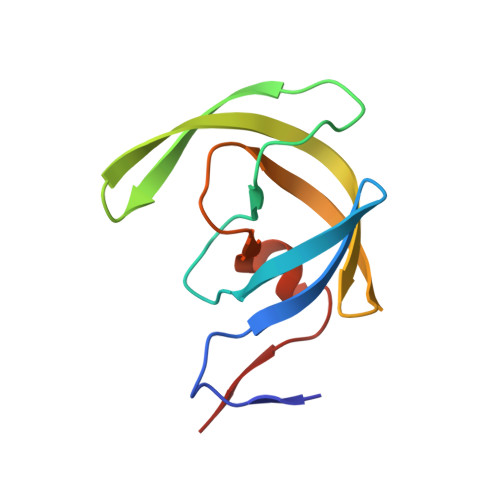Structure of HIV-1 protease in complex with potent inhibitor KNI-272 determined by high-resolution X-ray and neutron crystallography.
Adachi, M., Ohhara, T., Kurihara, K., Tamada, T., Honjo, E., Okazaki, N., Arai, S., Shoyama, Y., Kimura, K., Matsumura, H., Sugiyama, S., Adachi, H., Takano, K., Mori, Y., Hidaka, K., Kimura, T., Hayashi, Y., Kiso, Y., Kuroki, R.(2009) Proc Natl Acad Sci U S A
- PubMed: 19273847
- DOI: https://doi.org/10.1073/pnas.0809400106
- Primary Citation of Related Structures:
2ZYE, 3FX5 - PubMed Abstract:
HIV-1 protease is a dimeric aspartic protease that plays an essential role in viral replication. To further understand the catalytic mechanism and inhibitor recognition of HIV-1 protease, we need to determine the locations of key hydrogen atoms in the catalytic aspartates Asp-25 and Asp-125. The structure of HIV-1 protease in complex with transition-state analog KNI-272 was determined by combined neutron crystallography at 1.9-A resolution and X-ray crystallography at 1.4-A resolution. The resulting structural data show that the catalytic residue Asp-25 is protonated and that Asp-125 (the catalytic residue from the corresponding diad-related molecule) is deprotonated. The proton on Asp-25 makes a hydrogen bond with the carbonyl group of the allophenylnorstatine (Apns) group in KNI-272. The deprotonated Asp-125 bonds to the hydroxyl proton of Apns. The results provide direct experimental evidence for proposed aspects of the catalytic mechanism of HIV-1 protease and can therefore contribute substantially to the development of specific inhibitors for therapeutic application.
Organizational Affiliation:
Molecular Structural Biology Group, Quantum Beam Science Directorate, Japan Atomic Energy Agency, 2-4 Shirakata-Shirane, Tokai, Ibaraki 319-1195, Japan.















